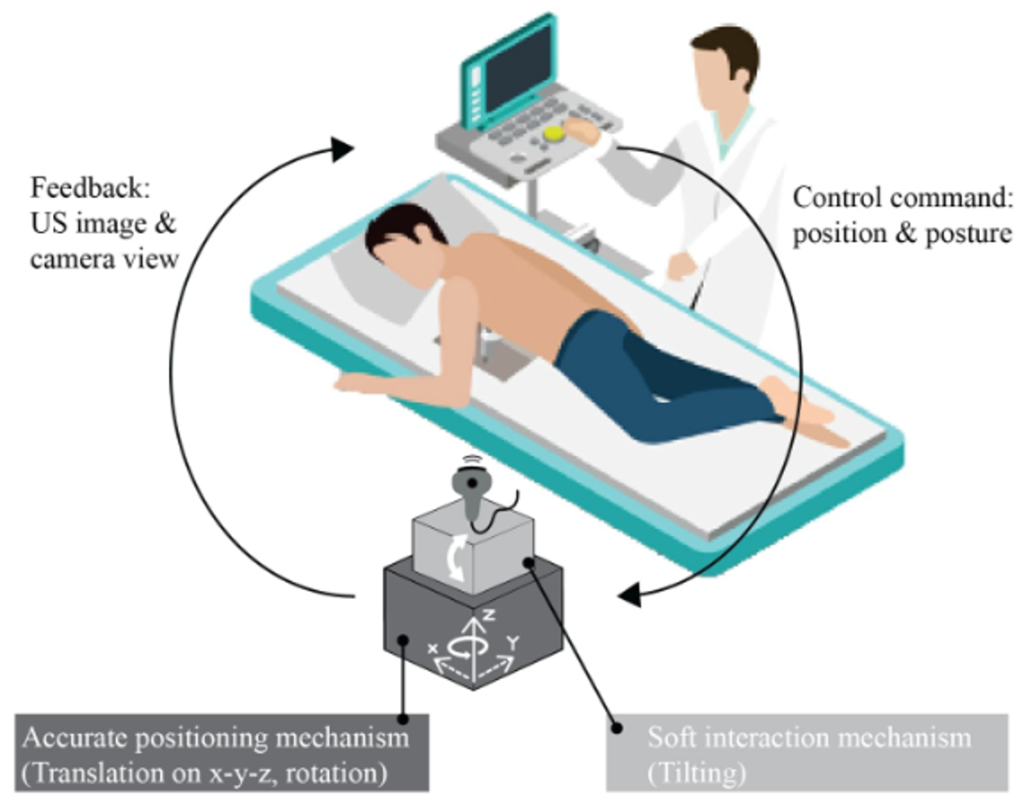Advantage and Core Benefit
- An echography robot is being developed by researchers at a Japanese university.
- The robotic system applies an ultrasound probe from under the bed to a patient lying face down on the bed.
- The heart image obtained with the robot is larger and clearer compared to a normal echogram performed in the supine position.
- The researchers and doctors have already developed a prototype of the robot.
Background and Technology
Echocardiography requires better images to diagnose heart disease. In a normal echocardiogram, the ultrasound probe is pressed against the patient’s chest. But the patient lies on the bed in a supine position, which causes the heart to move backward (downward). It means that the ultrasound images of the heart are blurred because the probe is far away from the heart.
Professor Kenji Suzuki and his colleagues at the University of Tsukuba have developed a new robotic echocardiography technology that can obtain clear images. This technology uses a bed with a hole in the chest position. This hole is important. First, the patient lies face down on the bed with the hole. Through this hole, an ultrasound probe operated by the robot is pressed against the patient’s chest from the bottom of the bed. Because the prone position moves the heart down and shortens the distance between the probe and the heart, this technique produces a clearer image of the heart.
This technology provides a safer exam. In a normal echo exam, a robot that manipulates a probe and presses it against the patient’s chest passes over the supine patient. This requires a technique to safely control the robotic arm. In this exam, however, the robot operates the probe under the patient in the supine position. As a result, the probe does not fall or collide with the patient, and there is no risk of injury to the patient. In addition, this technology can simplify equipment because the distance the probe must travel is short.
This technology can be applied to various targets of echo examinations, not just cardiac ultrasound examinations. The researchers are also working on combining this technology with AI technology to automatically analyze images and videos of examinations.
 |
Publications
- The paper is under review.
Patent
- Patent was filed in Japan. PCT application is ready.
Researcher
Prof. Kenji Suzuki, Institute of Systems and Information Engineering, University of Tsukuba
Expectations
The researchers are looking for equipment manufacturers and AI imaging companies to jointly develop an ultrasound imaging support robot based on this technology. If you are interested in this technology, please contact us.
Project No.DA-04996


